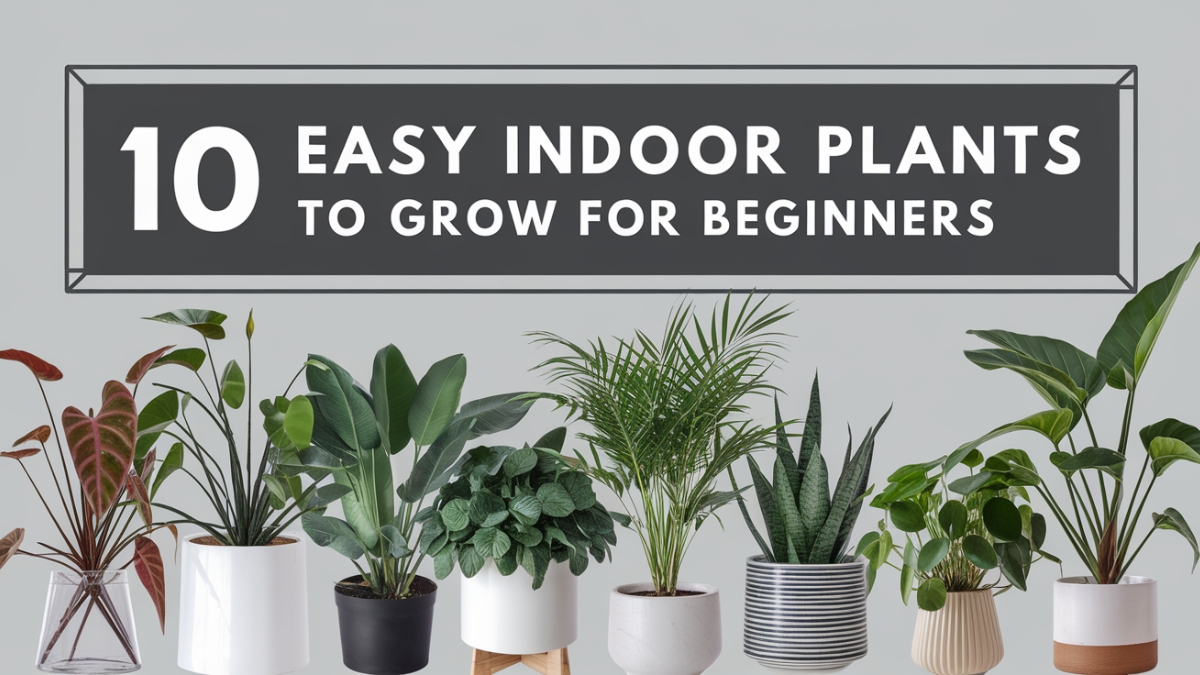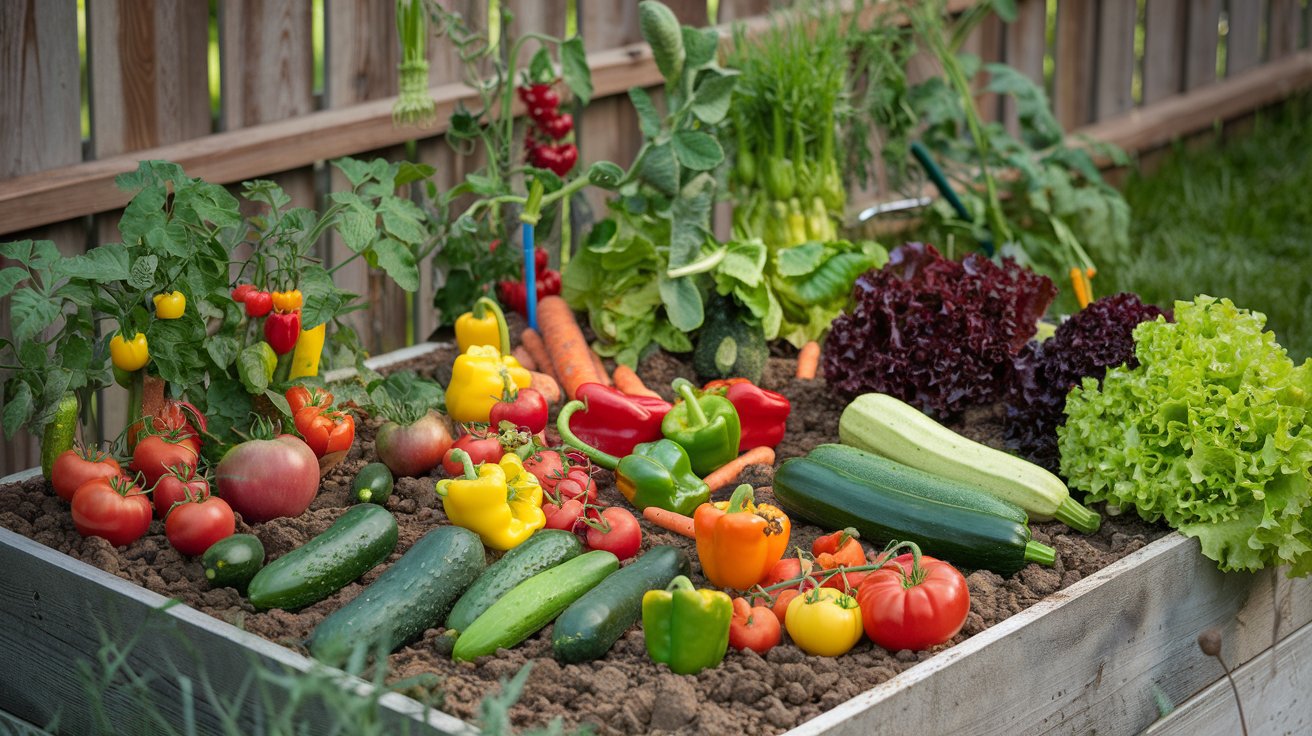Why Easy Indoor Plants Are a Beginner’s Best Friend
Bringing plants into your home can feel like a wellness upgrade—but if you’re new to gardening, it can also feel intimidating. The good news? There are plenty of easy indoor plants to grow that are low-maintenance, beginner-friendly, and suited for modern, urban lifestyles. Whether you live in a small apartment, have limited sunlight, or just don’t know the difference between soil types, this guide is designed to walk you through the best starter plants and how to care for them with minimal effort.
These plants are hand-picked by plant care experts and tested by everyday people just like you—urban dwellers, office workers, and time-strapped individuals. Each one has been proven to thrive in less-than-ideal conditions, giving you the confidence to green up your space without fear of failure.
Key Takeaways
Table of Contents
1. Snake Plant (Sansevieria): The “Set It and Forget It” Green Companion
The snake plant is the ultimate choice for beginners who worry about forgetting to water or lacking ideal lighting. Native to West Africa, this resilient beauty features tall, upright leaves with striking green-and-yellow variegation. It’s often referred to as “Mother-in-Law’s Tongue” due to its sword-like shape—and yes, it’s that tough.
Why Snake Plants Work for Beginners
They’re extremely drought-tolerant and thrive in indirect to low light. Many office buildings and lobbies use them as decorative pieces because they’re nearly impossible to kill. In fact, NASA’s Clean Air Study famously identified the snake plant as a top performer in removing indoor pollutants like formaldehyde and benzene.
Case Study: Apartment in Chicago
A busy law student in Chicago shared her experience of keeping a snake plant alive through finals, a two-week vacation, and a winter move. Despite inconsistent watering and light, the plant remained vibrant. “It’s the only thing I’ve managed to keep alive other than myself,” she joked.
Care Tips for Snake Plant:
Snake Plant Care Summary
Requirement | Snake Plant (Sansevieria) |
|---|---|
Light | Low to medium, indirect |
Watering | Every 2–3 weeks |
Growth Rate | Slow to moderate |
Difficulty Level | Very easy |
Toxic to Pets? | Yes (mildly toxic if ingested) |
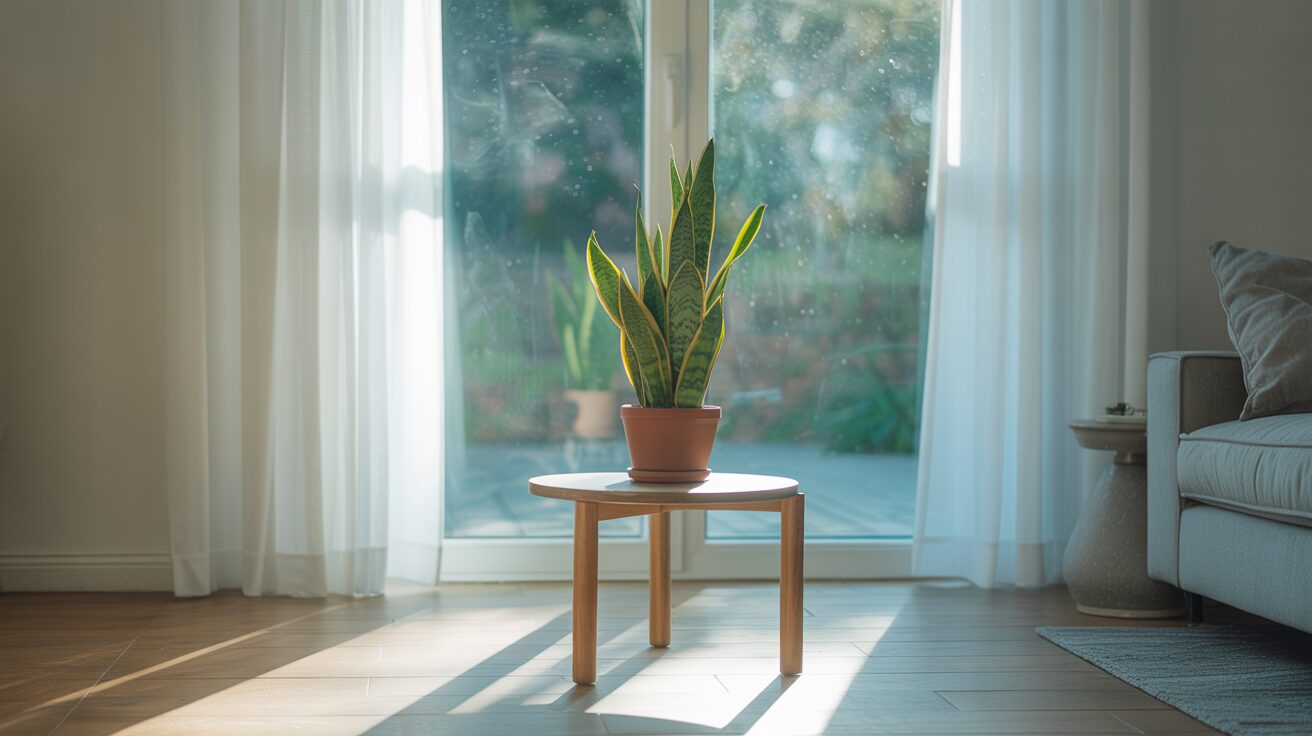
2. ZZ Plant (Zamioculcas zamiifolia): Built for Neglect, Made for Style
If you’re someone who tends to forget you own plants until they look sad, the ZZ plant may become your green soulmate. With waxy, dark green leaves and a chic architectural shape, it’s one of the most popular low-maintenance plants for beginners. It’s particularly suitable for offices, dorm rooms, and apartments that receive minimal light.
Why It’s a Favorite
The ZZ plant thrives in neglect. It tolerates low light, drought, and even a little dust. Its rhizome-based root system stores water, allowing the plant to go weeks—even a month—without watering. Plus, its glossy leaves bounce light and add a lush look to even the smallest space.
Expert Insight
According to horticulturist Jane Bowers, “The ZZ plant is ideal for anyone who travels a lot or simply forgets. It practically thrives on neglect—an absolute gem for low-effort plant lovers.”
Real-World Use Case
In a coworking space in Brooklyn, ZZ plants are used at every desk to enhance air quality and add natural aesthetic. Staff report that they’ve barely been watered in months, and yet they’re still thriving.
Care Tips for ZZ Plant:
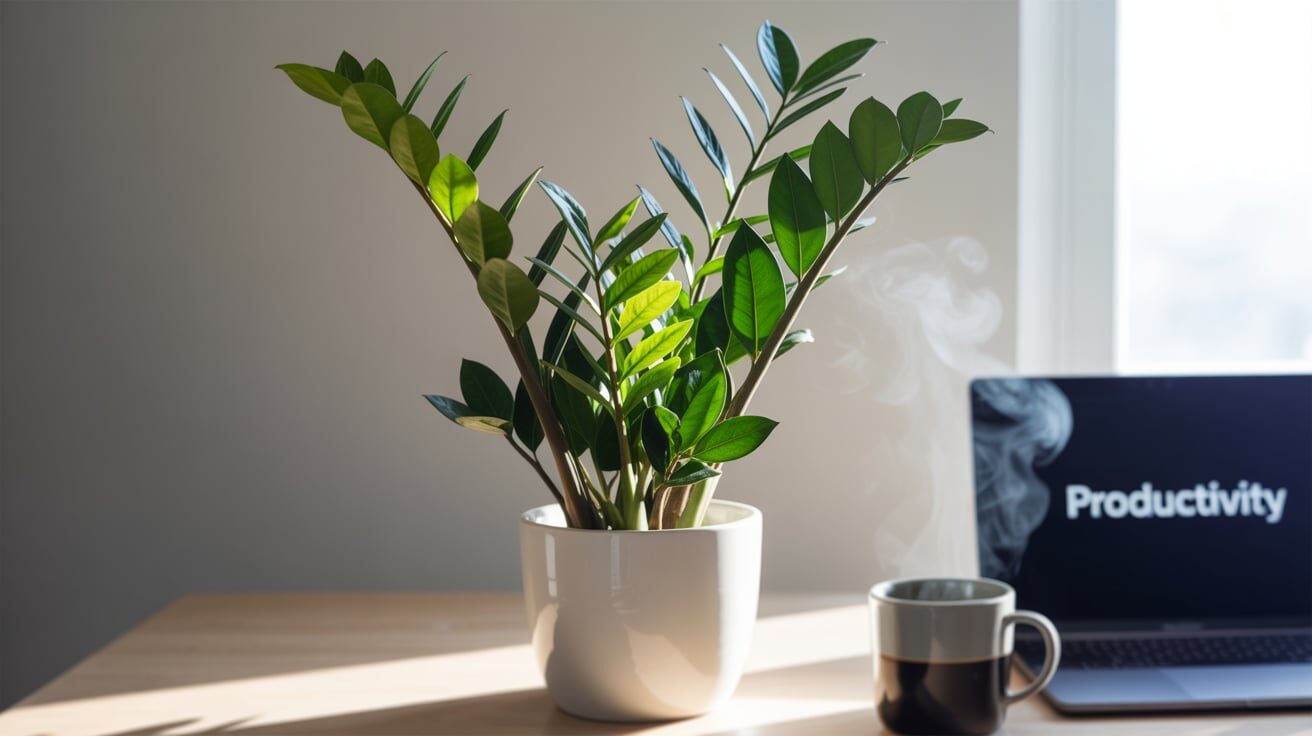
3. Pothos (Epipremnum aureum): The “Grow Anywhere” Vine
If you’re after a lush, trailing plant that instantly livens up a room, look no further than pothos. With heart-shaped leaves that can be marbled in green, gold, or even neon, this tropical vine is both visually striking and extremely adaptable.
Why Pothos Are Great for Beginners
Pothos thrive in a wide range of conditions and are incredibly forgiving. Missed a watering? It’ll bounce back. Low light? Still grows. Want to propagate more? Just snip a stem and place it in water—roots will appear in days.
Success Story: DIY Plant Wall
An urban couple in Seattle created a wall of pothos in their hallway using hanging macrame holders. With no direct sunlight and only a few hours of ambient light daily, the plants not only survived but grew several feet in six months.
Care Instructions:
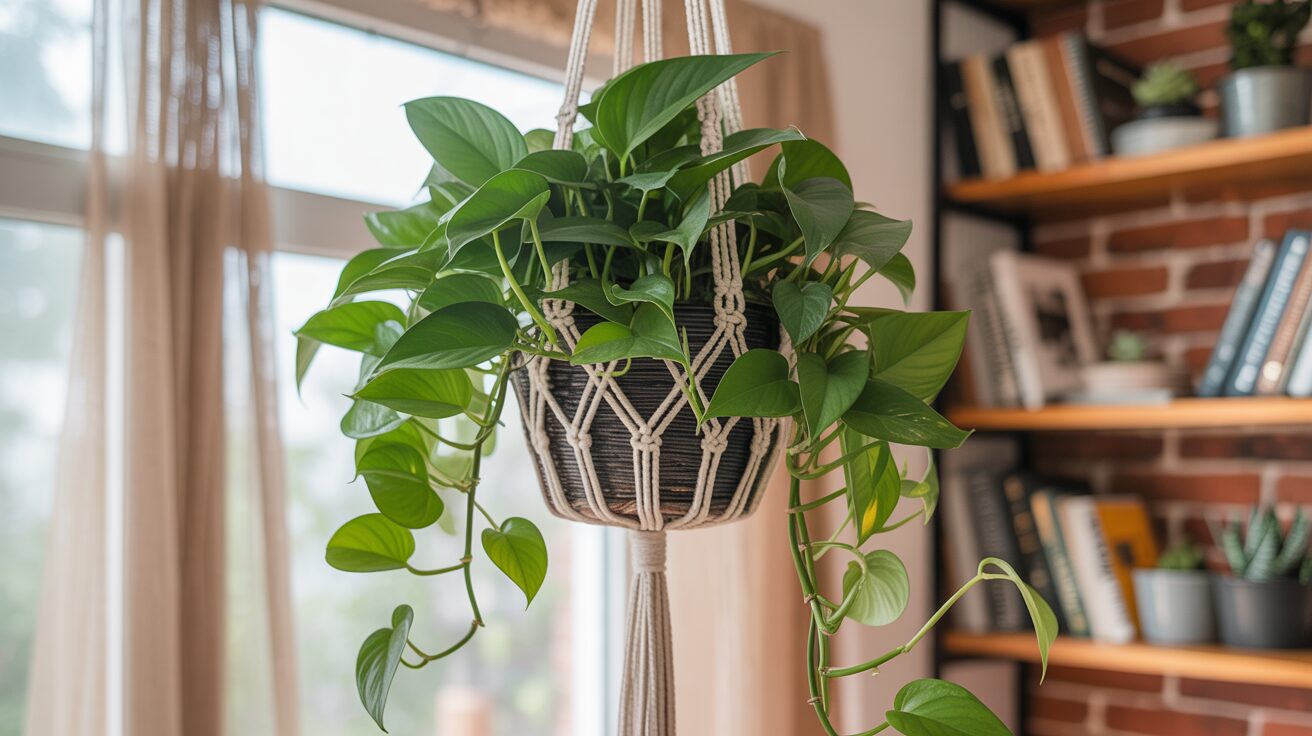
4. Spider Plant (Chlorophytum comosum): A Friendly, Fast-Growing Favorite
Cheerful and generous, the spider plant is ideal for beginners who want quick results. Known for its long, arched leaves and baby “spiderettes,” this plant grows fast and multiplies easily.
What Makes Spider Plants Ideal
They adapt to most lighting conditions and are non-toxic, making them perfect for homes with pets or kids. Spider plants are also fantastic natural air purifiers and often used in schools and daycare centers for this reason.
Real-World Example: Classroom Greens
At an elementary school in Portland, spider plants are used in classrooms to improve air quality and teach responsibility. Students water them weekly, and the plants thrive even with minimal care.
Care Tips:
Spider Plant at a Glance
Feature | Description |
|---|---|
Growth Speed | Fast |
Light Requirement | Bright, indirect |
Safe for Pets? | Yes |
Propagation | Easy via offshoots (“babies”) |
Maintenance Level | Very low |
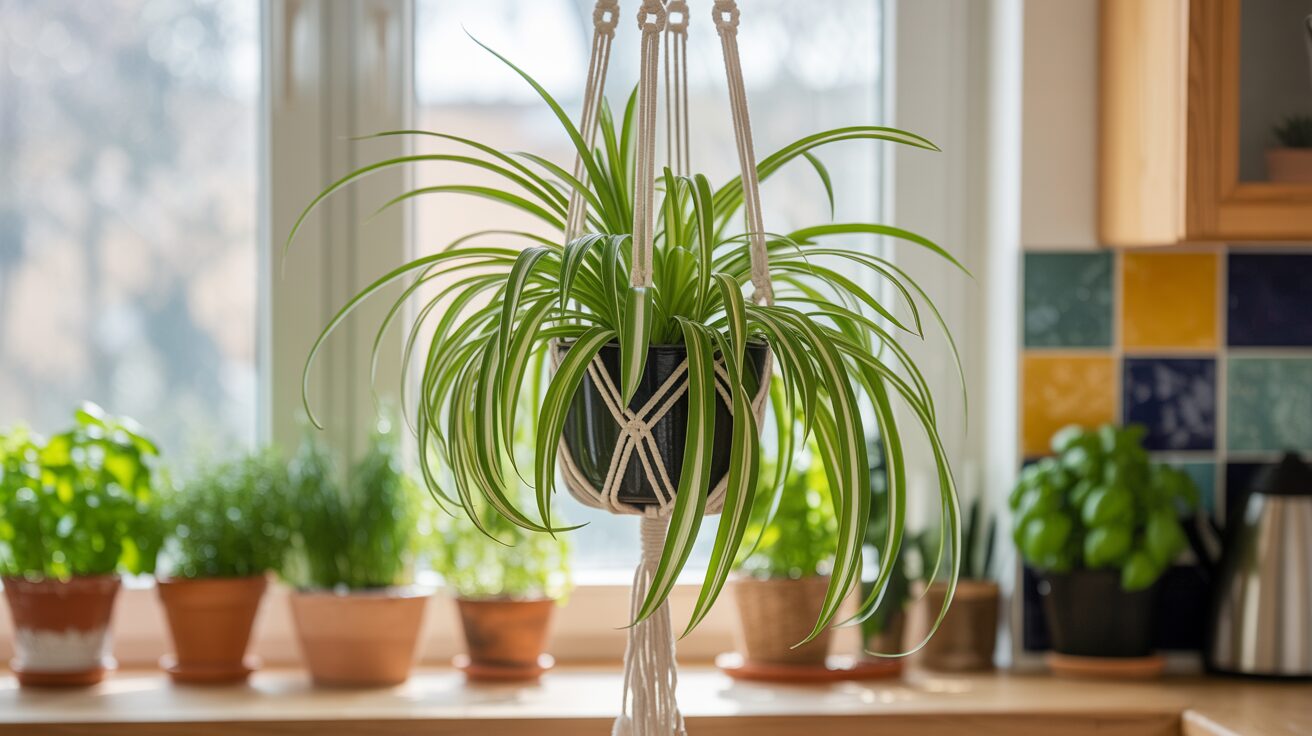
5. Peace Lily (Spathiphyllum): Elegant and Easy in Equal Measure
The Peace Lily is one of those rare indoor plants that manages to look exotic while being deceptively simple to care for. Its graceful white blooms and lush green foliage instantly add elegance to any room—without adding extra stress.
Why Peace Lilies Are Perfect for Beginners
They tolerate low light and signal clearly when they need attention. If you forget to water, you’ll notice the leaves droop—a quick drink, and they perk right up within hours. This visible cue is incredibly helpful for beginners unsure about watering schedules.
Real-World Example: Home Office Upgrade
A freelance designer in Atlanta placed a peace lily in her home office with minimal sunlight. Not only did it thrive, but she also noticed a decrease in dry air symptoms thanks to its humidifying effects. Her productivity improved, and the space felt more alive.
Health Benefits and Air Purification
NASA’s Clean Air Study found that peace lilies remove pollutants like ammonia and carbon monoxide from indoor air. This makes them ideal for closed spaces with poor ventilation—like bathrooms, bedrooms, or dens.
Care Tips
6. Aloe Vera: The Practical Beauty with Medicinal Charm
Aloe vera is more than just an Instagram-friendly succulent—it’s also a multitasking healer. Known for its spiky, fleshy leaves filled with medicinal gel, aloe is both beautiful and useful.
Why Aloe Vera Belongs in Every Home
This plant thrives on neglect. Forget to water for a while? It’s fine. Too much sun? It loves it. And if you ever burn yourself cooking or get a minor scrape, just snap a leaf and apply the gel for instant soothing relief.
Use Case: Kitchen Counter Companion
A family in Denver keeps a mature aloe vera plant by the kitchen window. It’s a go-to remedy for burns and sun exposure. Over the years, they’ve propagated dozens of small aloe pups to give as gifts.
Best Practices
7. Chinese Evergreen (Aglaonema): A Colorful Low-Light Champ
If you’re looking for a pop of color in a shady spot, Chinese Evergreen is your match. This vibrant, hardy plant is perfect for small apartments or offices where lighting is less than ideal.
Why Aglaonema is a Winner
This plant tolerates everything from low humidity to fluorescent lighting. It’s one of the most undemanding houseplants and comes in a variety of leaf patterns—silver, green, red, and even pink.
Expert Endorsement
Dr. Lila Santos, an indoor plant researcher, notes, “Chinese Evergreens are some of the best plants for new urban gardeners. They acclimate well to artificial lighting and respond positively to minimal care.”
User Story: Windowless Wonder
A graphic designer in Toronto kept a Chinese Evergreen in a hallway with zero natural light. The plant thrived for two years on just weekly watering and ambient room light.
Basic Care
8. Cast Iron Plant (Aspidistra elatior): Built for Neglect and Tough Conditions
The Cast Iron Plant lives up to its name—it’s almost indestructible. This Victorian-era favorite is making a comeback in modern homes, thanks to its lush foliage and tolerance to neglect.
Why It’s Beginner-Proof
Low light? It’s fine. Miss a watering or two? No problem. Cold drafts or dry air? Still thriving. It’s ideal for those who want greenery without any of the gardening fuss.
Historical Relevance
Popular in the 1800s in homes heated by coal fireplaces (notoriously harsh environments), the Cast Iron Plant earned a reputation for resilience. Today, it’s loved by busy professionals and minimalists alike.
Best Uses
Perfect for corners, bathrooms, and entryways. They’re slow growers but reward patience with lush, dark green leaves.
Care Instructions
9. Rubber Plant (Ficus elastica): Bold, Decorative, and Surprisingly Easy
For those wanting a plant with height and visual drama, the rubber plant is an excellent choice. It offers broad, glossy leaves and can grow tall with proper care—all while requiring little maintenance.
Why Beginners Love Rubber Plants
They adapt well to indoor conditions, prefer indirect light, and only need watering when the soil feels dry. With occasional pruning, you can keep them compact or encourage them to grow tall as a floor plant.
Home Styling Example
In a Scandinavian-themed apartment in San Francisco, a rubber plant anchors the living room beside a white armchair. The plant has been growing steadily for over three years, with minimal intervention.
Care Guide
10. Philodendron: Forgiving and Flourishing in Every Home
Last but never least, the philodendron is a versatile favorite for beginners. With heart-shaped or split leaves (depending on the variety), it grows rapidly and thrives with almost no effort.
Why It’s a Go-To Plant
Philodendrons adapt to all kinds of light except direct sun, are easy to propagate, and only need occasional watering. They grow as vines or upright bushes, depending on the type, and can suit any interior style.
Real-World Case
A college student in Los Angeles shared her vine-style philodendron with three roommates. It started as one pot and now stretches across two bookshelves, rooted in water-filled jars with no soil.
Easy Care Tips
Conclusion: Bring Nature In—Without the Stress
You don’t need to be a botanist or live in a greenhouse to enjoy indoor plants. These easy indoor plants to grow prove that a little greenery can thrive in even the busiest homes, tiniest apartments, and darkest corners. With the right plant, you’re not just decorating your space—you’re creating a calming, living environment that purifies the air and boosts your mood.
Frequently Asked Questions
What are the best low maintenance indoor plants?
Snake plant, ZZ plant, and cast iron plant top the list for surviving with minimal attention.
Which are the best houseplants for beginners?
Pothos, spider plant, and philodendron are excellent beginner houseplants due to their resilience and fast growth.
What are some easy care indoor plants?
Peace lily, Chinese evergreen, and aloe vera are all easy-care, beginner-friendly options.
Are there low light houseplants that thrive indoors?
Yes! ZZ plant, Chinese evergreen, and peace lily all thrive in low-light environments.
What indoor plants work well for small apartments?
Try pothos, spider plant, or rubber plant—all stylish and compact for tight spaces.
Which indoor plants don’t need much water?
Snake plant, aloe vera, and ZZ plant are drought-tolerant and perfect for infrequent watering.

Robert Martin is a passionate blogger and versatile content creator exploring the intersections of personal finance, technology, lifestyle, and culture. With a strong background in financial literacy and entrepreneurship, he helps readers make smarter money moves, build sustainable side hustles, and achieve financial independence.
Beyond finance, Robert shares his insights on home decor and gardening—offering practical ideas for creating beautiful, functional living spaces that inspire comfort and creativity. He also dives into the dynamic worlds of sports and celebrity news, blending entertainment with thoughtful commentary on trends that shape today’s pop culture.
From decoding the latest fintech innovations to spotlighting everyday success stories, Robert delivers content that’s informative, relatable, and actionable. His mission is to empower readers to live well-rounded, financially confident lives while staying inspired, informed, and ahead of the curve.

